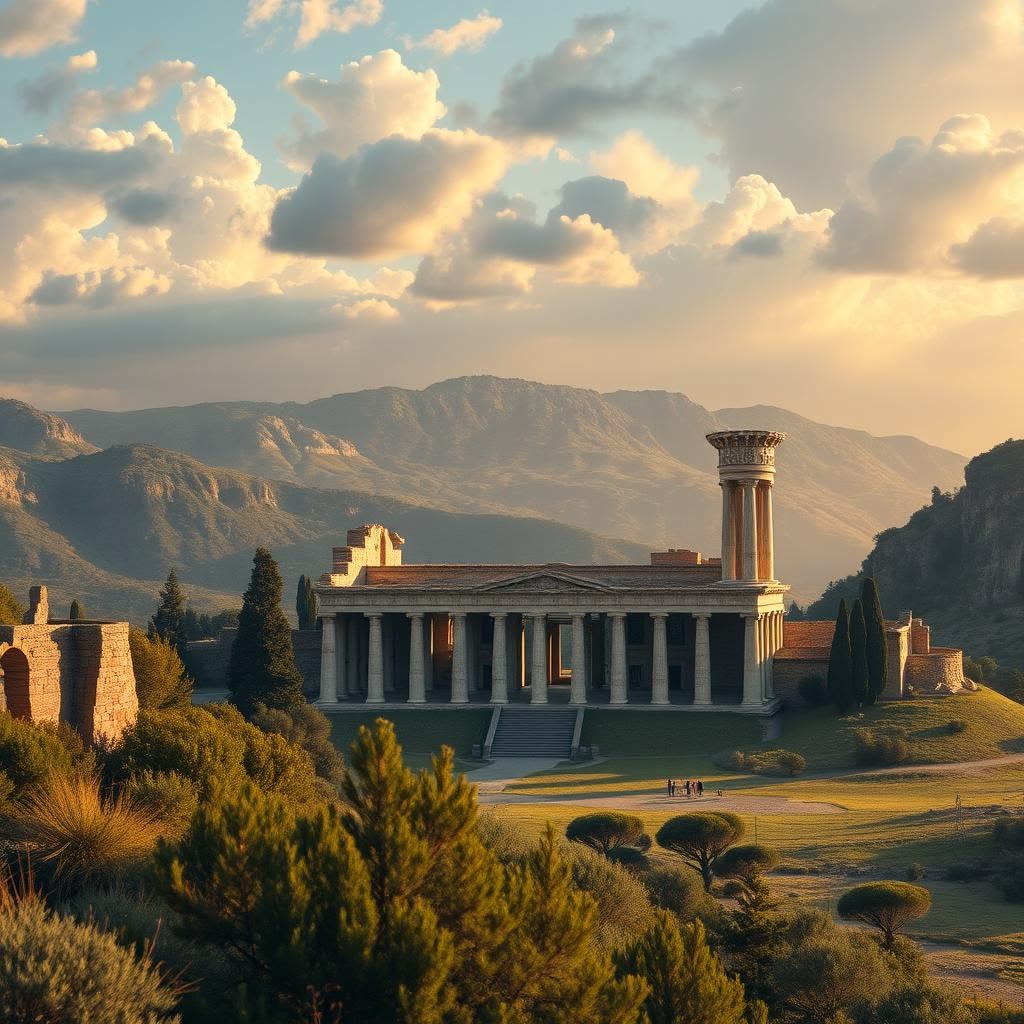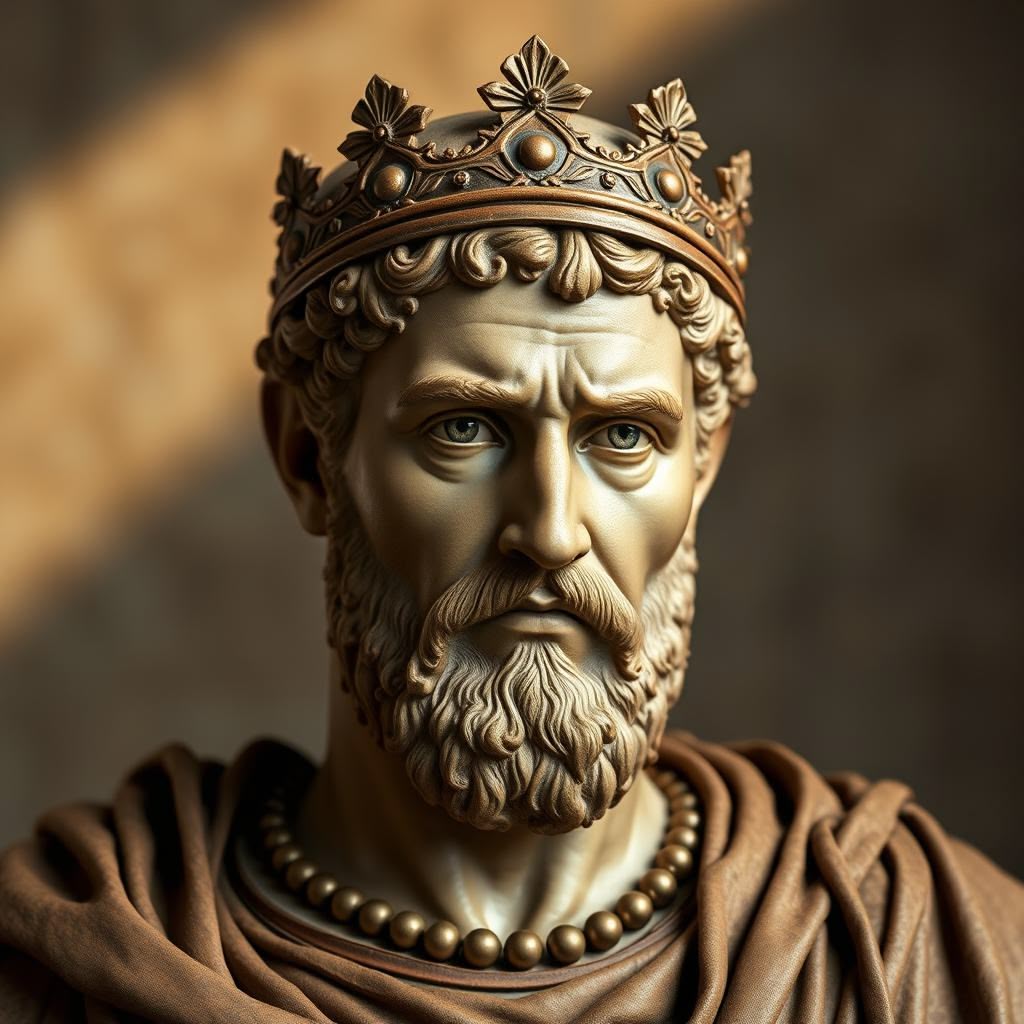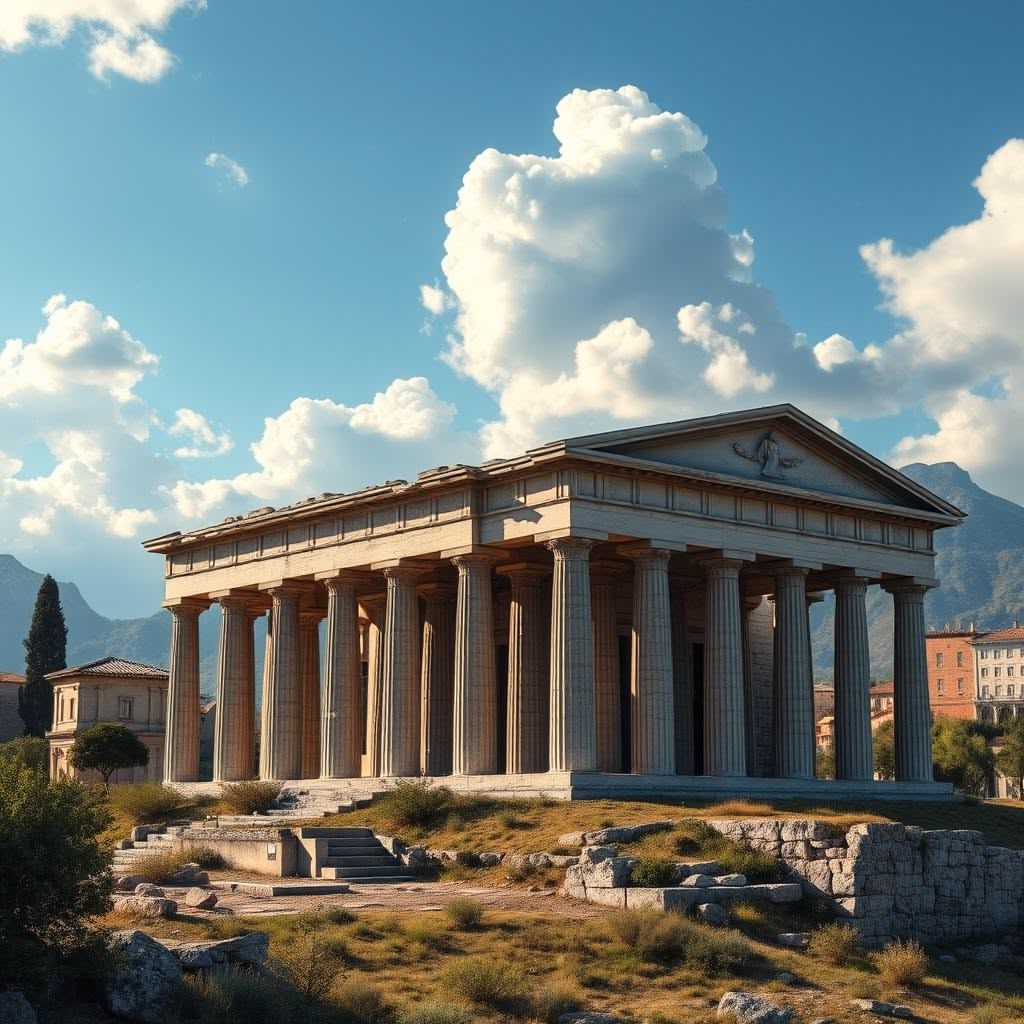The corporate boardroom fell silent as Marcus finished his presentation. The company was in crisis—rapid expansion had created a management nightmare, with teams working in silos, communication breaking down, and productivity plummeting. The CEO leaned forward, “We’ve tried everything in modern management theory. What else is there?”
Marcus smiled. “Actually, I found the solution in ancient Rome.”
This wasn’t the answer anyone expected. Yet, buried in the annals of history lies a leadership framework so revolutionary that it saved an empire on the brink of collapse—a system that eerily parallels the challenges facing today’s organizations. The architect? Not Steve Jobs, Jack Welch, or any modern management guru, but a Roman Emperor whose name rarely appears in leadership books: Diocletian.
When Diocletian took power in 284 CE, the Roman Empire was experiencing what modern executives would recognize as a classic scaling problem. Too vast to manage centrally, plagued by communication delays, and vulnerable to power struggles, the empire had seen 20 emperors in 50 years—most assassinated by their own guards or rivals. The organizational structure that had worked for centuries was failing spectacularly.
What Diocletian implemented next wasn’t just a band-aid solution but a complete organizational reimagining that not only stabilized the empire but extended its life by centuries. His approach—combining decentralized authority with clear accountability, specialization of leadership roles, and systemized succession planning—offers a blueprint that today’s executives would pay management consultants millions to develop.
Let me show you why Diocletian’s 1,700-year-old leadership strategies might be exactly what your organization needs right now—and how implementing these ancient principles can revolutionize your approach to today’s most pressing management challenges.

The Crisis of Scale: When Traditional Management Fails
Before examining Diocletian’s solutions, we need to understand the crisis he faced—one that mirrors the challenges of many growing organizations today.
By the third century, the Roman Empire had grown too vast for a single individual to effectively govern. Information took weeks to travel from frontiers to the capital. Regional governors operated with minimal supervision, leading to corruption and mismanagement. The military, responsible for protecting thousands of miles of borders, lacked coordination and clear leadership.
Does this sound familiar? Today’s organizations face remarkably similar challenges:
James Citrin, leadership expert at Spencer Stuart, notes: “The most common failure pattern we see in executives is the inability to scale their leadership as their organization grows. What works at one scale often becomes dysfunctional at the next.”
Traditional hierarchical management structures—where all decisions flow through a central authority—break down as organizations expand. Information bottlenecks form. Decision-making slows. Innovation stalls. Employee engagement plummets as people feel disconnected from leadership. The very success of growth creates the conditions for failure.
This is precisely the situation Diocletian inherited—an organization too large and complex for traditional management approaches. What makes his response remarkable is that he didn’t just make incremental improvements to the existing system; he completely reimagined how leadership could function.

The Tetrarchy: Diocletian’s Revolutionary Organizational Design
Facing an empire in crisis, Diocletian implemented what historians call the “Tetrarchy”—a four-person leadership team with clearly defined roles, responsibilities, and territories. This wasn’t merely sharing power; it was a sophisticated organizational design that balanced central vision with distributed execution.
The structure worked as follows: Two senior emperors (Augusti) and two junior partners (Caesars), each responsible for a specific geographic region of the empire. The Augusti held ultimate authority but delegated substantial decision-making power to their Caesars, who would eventually succeed them in a planned transition.
What made this revolutionary wasn’t just dividing the empire into four administrative zones—it was how Diocletian implemented this division of responsibility while maintaining unity of purpose:
First, he created clear specialization of function. Each tetrarch focused on specific challenges in their region, allowing them to develop deep expertise and respond quickly to local needs. One managed the Persian frontier, another focused on Germanic tribes, and so on.
Second, he implemented consistent systems and processes across all regions. While each tetrarch had significant autonomy, they operated within a framework of standardized laws, tax systems, and administrative procedures that Diocletian established.
Third, he formalized communication channels between the four leaders, ensuring regular information sharing and coordination through messengers, written reports, and occasional in-person councils.
The parallels to modern organizational theory are striking. What Diocletian created in 293 CE bears remarkable resemblance to what management theorists today call “distributed leadership” or matrix organizations—structures designed to balance centralized strategy with localized execution.
Professor Linda Hill of Harvard Business School, who has studied distributed leadership extensively, observes: “In complex organizations, leadership is not a solo act, it’s a team performance. The most effective leaders today know how to create systems where responsibility is shared but accountability remains clear.”
This is precisely what Diocletian achieved seventeen centuries earlier.

The Diocletian Principle: Delegation Without Abdication
Perhaps the most applicable lesson from Diocletian’s leadership approach is what I call “The Diocletian Principle”—the ability to delegate substantial authority without abdicating ultimate responsibility.
Many leaders struggle with delegation. They either micromanage, creating bottlenecks and disempowered teams, or they delegate without proper oversight, leading to misalignment and chaos. Diocletian found the elusive middle ground.
While each tetrarch had significant autonomy to address regional challenges, all major decisions aligned with central policies. Diocletian maintained ultimate authority while giving his leadership team the freedom to execute within their domains of expertise.
He accomplished this through several mechanisms that today’s executives can implement immediately:
First, he selected leaders based on competence rather than connections. Breaking with Roman tradition, Diocletian chose his co-emperors not from family members but from proven military commanders with demonstrated leadership skills. Merit trumped nepotism.
Second, he created clear boundaries of authority. Each tetrarch knew exactly which decisions they could make independently and which required consultation. This clarity eliminated both decision paralysis and overstepping.
Third, he established regular review mechanisms. Through formal reports and meetings, Diocletian maintained awareness of regional activities without needing to personally approve every action.
Fourth, he connected authority with specialized expertise. Each tetrarch was assigned to regions where they had prior experience and demonstrated competence.
Former Medtronic CEO Bill George, who writes extensively on authentic leadership, notes: “The art of great leadership is knowing when to hold tight and when to let go. You need a strong enough vision that others can execute without you dictating every move.”
For today’s leaders, implementing the Diocletian Principle means designing systems where team members have meaningful authority within clear parameters. It means selecting leaders based on demonstrated capability rather than seniority or politics. And it means creating feedback mechanisms that allow you to maintain awareness without becoming a bottleneck.

Systematizing Succession: The Genius of Planned Transitions
Perhaps the most forward-thinking aspect of Diocletian’s leadership model was his approach to succession planning—a challenge that continues to derail organizations today.
Leadership transitions represent profound vulnerability for organizations. A 2023 PwC study found that poorly planned CEO transitions cost large companies an average of $1.8 billion in lost market value. For smaller organizations, a leadership vacuum can be existential.
Diocletian’s solution was revolutionary. Instead of the ad-hoc, often violent succession process that had plagued Rome, he created a systematic approach: Each Augustus (senior emperor) would rule for 20 years, then retire. Their Caesar (junior partner) would be promoted to Augustus and select a new Caesar. This created a continuous pipeline of experienced leadership, with clear paths for advancement and knowledge transfer.
This system addressed multiple leadership challenges simultaneously:
It eliminated succession uncertainty. Everyone knew who would take over and when, reducing the political maneuvering and instability that had characterized previous transitions.
It created a structured mentorship program. Junior leaders worked alongside experienced emperors, learning the complex art of governance before assuming full responsibility.
It reduced the risk of poor leadership selection. Potential successors demonstrated their capabilities over years, not in a single selection process.
It allowed for planned knowledge transfer. Critical relationships, information, and context passed methodically from one generation of leadership to the next.
For modern organizations, Diocletian’s succession system offers a template for addressing one of the most persistent leadership challenges. Instead of treating succession as an event triggered by a resignation or retirement, it becomes an ongoing process of identification, development, and gradual transition.
Ram Charan, renowned business advisor and author of “Leaders at All Levels,” echoes this ancient wisdom: “Succession planning cannot be a one-time event. It must be a structured, continuous process that identifies and develops leaders long before they’re needed in top positions.”

The Results: How Diocletian’s Reforms Transformed Performance
The proof of any leadership approach lies in its results. For Diocletian, the outcomes were remarkable:
Before his reforms, the Roman Empire had cycled through 20 emperors in 50 years, with economic chaos, military defeats, and territorial losses. After implementing his leadership system, the empire stabilized dramatically. The tetrarchy restored administrative efficiency, strengthened borders, reformed the currency, and reorganized the military into a more effective fighting force.
Most significantly, Diocletian’s reforms extended the life of the Western Roman Empire by over a century and the Eastern Empire (which maintained many of his innovations) for more than a millennium. His organizational redesign quite literally preserved civilization through one of history’s most turbulent periods.
While your organization may not face barbarian invasions, the principles that drove these results remain powerful. Organizations that effectively implement distributed leadership models consistently outperform their centralized counterparts.
A 2022 McKinsey study found that companies with strong distributed leadership practices were 1.4 times more likely to outperform their sector averages. Similarly, research from the Harvard Business School shows that firms with effective delegation practices demonstrate 33% higher innovation outcomes and 28% lower leadership turnover.
Perhaps most compelling is how Diocletian’s approach addresses the core challenges of scaling organizations. As Jocko Willink, former Navy SEAL commander and leadership consultant, observes: “Decentralized command isn’t just more efficient—it’s more resilient. When leadership is distributed, the organization can absorb shocks that would cripple centralized structures.”
Implementing Diocletian’s Leadership Model in Your Organization
How can today’s leaders apply these ancient principles to modern challenges? Here are specific, actionable strategies based on Diocletian’s framework:
1. Map your empire and divide it strategically
Diocletian didn’t divide the empire randomly—he created regions based on natural boundaries, economic connections, and security challenges. Similarly, examine your organization to identify natural divisions that align with customer segments, product lines, or geographic markets.
For each division, identify the specific challenges and opportunities it faces. What unique expertise does each area require? What metrics would indicate success? This mapping exercise creates the foundation for meaningful delegation.
2. Select and develop your tetrarchs
Identify potential leaders based on demonstrated competence rather than politics or seniority. Look for individuals who have shown mastery in their current roles and the potential to think strategically.
Once identified, develop these leaders through progressive responsibility. Diocletian’s Caesars didn’t start with full authority—they earned increasing autonomy by demonstrating good judgment.
3. Create clear decision frameworks
Effective delegation requires clarity about which decisions happen where. Develop explicit guidelines for:
– Decisions that remain centralized (strategic direction, major investments, core values)
– Decisions that require consultation before local action
– Decisions that can be made autonomously by regional leaders
Document these boundaries clearly and revisit them regularly as leaders develop and conditions change.
4. Establish coordination mechanisms
Diocletian’s tetrarchy functioned because the four leaders stayed aligned through formal communication channels. In your organization, this might include:
– Regular leadership councils where division heads share challenges and coordinate activities
– Standardized reporting frameworks that create visibility across the organization
– Rotation programs where rising leaders spend time in different divisions
– Cross-functional projects that build relationships across organizational boundaries
5. Implement systematic succession planning
Create a formal process for identifying potential successors for key positions. Like Diocletian’s Caesars, these individuals should work alongside current leaders, taking on increasingly complex responsibilities while receiving mentorship.
Document critical knowledge, relationships, and context so these assets aren’t lost during transitions. Establish clear timelines and milestones for leadership development and transition.
6. Standardize core processes while allowing local innovation
Identify which processes must remain consistent across the organization and which can be adapted to local conditions. Diocletian standardized taxation, currency, and legal codes while allowing regional leaders to adapt military tactics to local threats.
In your organization, this might mean consistent financial reporting, core technology platforms, and brand standards, with flexibility in customer engagement strategies, talent development approaches, and operational execution.
Addressing the Objections: Why This Ancient Model Still Works
Skeptics might question whether a 1,700-year-old leadership model remains relevant. Let me address the most common objections:
“Our business moves too fast for distributed leadership.”
In fact, the opposite is true. Centralized decision-making creates bottlenecks that slow organizational response. Properly implemented distributed leadership accelerates decision-making by pushing authority closer to where information exists. As General Stanley McChrystal demonstrated in transforming U.S. special operations to combat Al-Qaeda, even organizations facing rapidly changing conditions benefit from distributed leadership—provided they maintain strong coordination mechanisms.
“We’ll lose control and strategic alignment.”
Diocletian maintained central control of strategic direction while delegating execution. Modern distributed leadership models follow the same principle—clear central vision with local implementation. Companies like Haier, the Chinese appliance manufacturer, have demonstrated that properly structured distributed leadership can actually strengthen strategic alignment by creating more engagement with the organization’s direction.
“Our company culture wouldn’t support this model.”
Culture follows structure and leadership behavior. Diocletian didn’t ask if Roman political culture would “support” his tetrarchy—he implemented structural changes that shifted the culture. Organizations from Morning Star (the tomato processing company with no managers) to Buurtzorg (the Dutch healthcare provider with self-managing teams) have successfully transformed hierarchical cultures through thoughtful restructuring and leadership development.
The Imperial Edge: Your Leadership Transformation
As we return to the boardroom where Marcus proposed looking to ancient Rome for management wisdom, imagine the skeptical faces around the table. Yet six months after implementing their version of Diocletian’s distributed leadership model, the company has seen remarkable results: faster decision-making, more engaged regional teams, and better coordination across previously siloed divisions.
The wisdom of the past isn’t just historically interesting—it’s practically powerful. Diocletian faced challenges that parallel our own: information overload, coordination across vast distances, maintaining unity of purpose while allowing local adaptation. His solutions weren’t just good for his time; they anticipated organizational principles that management theorists would “discover” centuries later.
Your organization may not be an empire, but it likely faces the classic challenges of scale: how to maintain strategic alignment while empowering local decision-making, how to develop the next generation of leadership, and how to create structures that balance efficiency with resilience.
Diocletian’s model offers not just inspiration but a practical template that has stood the test of time—literally helping preserve civilization through centuries of turbulence. By applying these ancient principles to modern challenges, you can transform your leadership approach and your organization’s performance.
The emperor’s playbook awaits. The question is: are you ready to lead like Diocletian?

